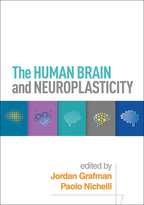The Human Brain and Neuroplasticity
Edited by Jordan Grafman and Paolo Nichelli
“This volume’s broad coverage of cutting-edge research findings and experimental techniques related to neuroplasticity is outstanding. It integrates research findings from studies of clinical and nonclinical human populations, as well as animal studies. Each chapter explains the historical context and accessibly reviews current knowledge. This volume will be useful to experienced researchers and graduate students alike. I have been studying brain plasticity for over 50 years, and, in my view, this is the best book ever published on the topic. A 'must read.'”
—Bryan Kolb, PhD, Emeritus Professor of Neuroscience, University of Lethbridge, Canada
“A thrilling deep dive into the brain’s extraordinary ability to adapt and reshape itself. Bringing together leading experts, and with a multidisciplinary approach, this book unpacks the brain’s resilience and adaptability in relation to neurodevelopment and to clinical conditions, such as stroke and psychiatric disorders.”
—Maria Luisa Gorno Tempini, MD, PhD, Charles Schwab Distinguished Professor, Departments of Neurology and Psychiatry and Behavioral Sciences, University of California, San Francisco
“Neuronal plasticity is a topic of great interest to students, researchers, and clinicians in the neurosciences (broadly defined). Grafman and Nichelli bring together knowledgeable scholars to cover important developments in the field in a manner that is engaging and easy to understand and assimilate, rather than an unwieldy encyclopedic approach. The volume examines how laboratory assessment techniques and research findings can be applied in clinical contexts, including refreshing discussions of the inherent challenges. This is an essential resource for all professionals and students interested in how the brain learns, recovers, and adapts.”
—Shane S. Bush, PhD, ABPP, Department of Psychology, University of Alabama
Table of Contents
1. Introduction: What Is Brain Plasticity?, Paolo Nichelli & Jordan Grafman2. Neurobiology Methods for Studying Neuronal Plasticity in Animal Models, Tara Keck
3. Methods for Studying Brain Plasticity in Humans, Christine J. Charvet
4. Different Levels of Plasticity, Luca Bonfanti
5. Basic Mechanisms of Plasticity in Learning and Memory, Dustin Fetterhoff, Manuela Costa, & Bryan Strange
6. Development and Plasticity of the Human Visual System, Maxime Bleau & Maurice Ptito
7. Adaptive Plasticity, Davide Bottari & Elena Nava
8. Cortical Reorganization after Brain Damage, Valentina Azzollini & Leonardo G. Cohen
9. Brain Plasticity, Cognitive Reserve, and Aging, Georgette Argiris, Christian Habeck, & Yaakov Stern
10. Therapeutic Interventions for Maladaptive Neurological Disorders, Negar Nasrkhani, Nasem Raies, Rachel Chang, Nishaad Sheth, Amitabh Bhattacharya, Naaz Desai, & Robert Chen
11. Therapeutic Interventions for Modulation of Brain Plasticity in Neurological and Psychiatric Diseases, Ali Jannati, Joyce Gomes-Osman, Davide B. Cappon, & Alvaro Pascual-Leone
12. Effects of Physical Exercise, Cognitive Training, and Multidomain Intervention on the Aging Brain, Louis Bherer & Tudor Vrinceanu
13. Brain–Computer Interfaces and Plasticity of the Human Nervous System, Natalie Mrachacz-Kersting & Dario Farina
14. Brain Plasticity in the Age of the Internet, Martin Korte
15. Concluding Thoughts on Neuroplasticity, Jordan Grafman & Paolo Nichelli
Index
About the Editors
Jordan Grafman, PhD, is Director of Brain Injury Research and Chief of the Cognitive Neuroscience Laboratory at the Shirley Ryan AbilityLab and Professor in the Department of Physical Medicine and Rehabilitation at Northwestern University. He served as Chief of the Cognitive Neuroscience Laboratory at the National Institute of Neurological Disorders and Stroke for several decades. With more than 600 publications, Dr. Grafman currently focuses his research on the brain bases of belief and the brain networks supporting reward and reinforcement. He also provides leadership of the Vietnam Head Injury Study. Dr. Grafman is a recipient of the U.S. Department of Defense Meritorious Service Award, the National Institutes of Health Award of Merit, the National Institutes of Health Director’s Award, and the Research Award from the Alexander von Humboldt Foundation in Germany.Paolo Nichelli, MD, is a retired Full Professor of Neurology at the University of Modena and Reggio Emilia in Modena, Italy, and former Clinical Director of the Neuroscience Department at the Sant'Agostino-Estense Modena Hospital. Since the beginning of his career, his research has focused on clinical and experimental neuropsychology. As a Visiting Scientist in the Cognitive Neuroscience Laboratory at the National Institute of Neurological Disorders and Stroke in the early 1990s, Dr. Nichelli became interested in using functional neuroimaging methods, which he later helped implement in Modena. A founding member and past president of the Italian Society of Neuropsychology, Dr. Nichelli has published over 280 scientific articles and book chapters.
